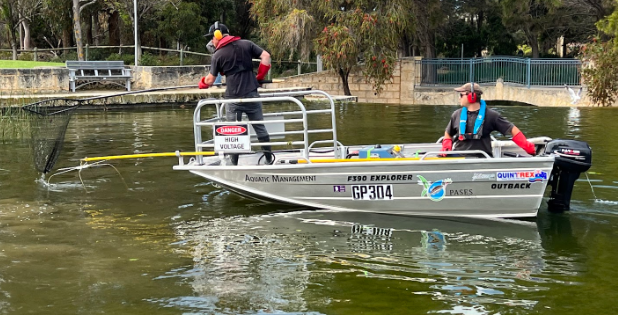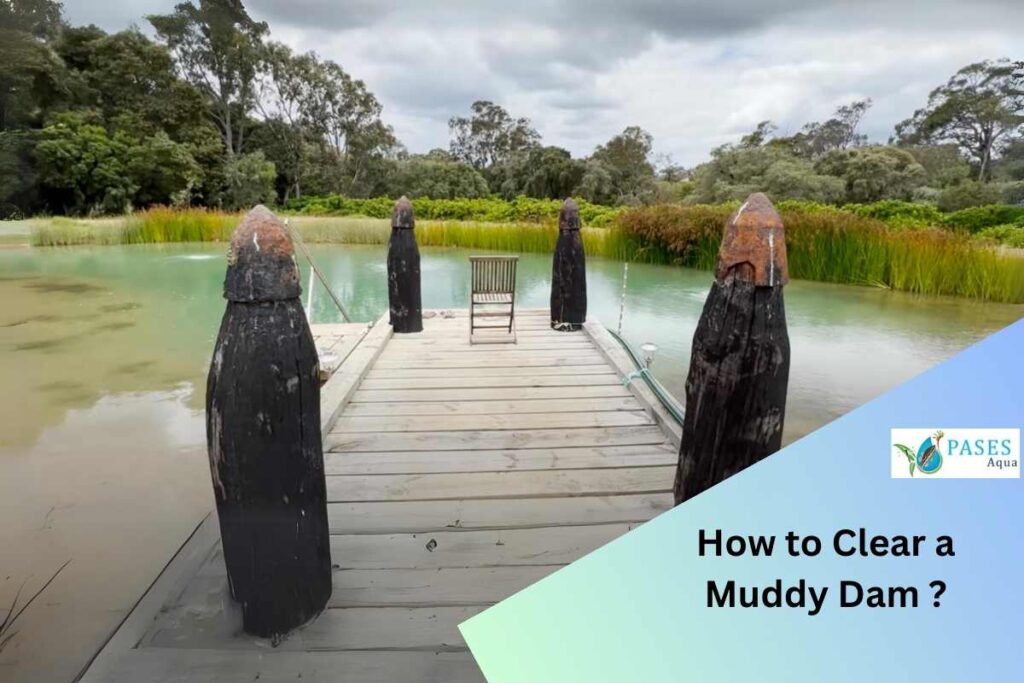Muddy dams can be a source of frustration, impacting not just the aesthetic appeal of your property but also the health of the aquatic ecosystem within. Clarifying the water in your dam is essential for maintaining a healthy environment for fish and plant life and ensuring the water is suitable for its intended use, whether for irrigation, livestock, or recreation. Several factors can contribute to turbid water, including soil erosion, runoff, and the disturbance of sediments from animals (koi, yabbies, marron), and these need to be systematically addressed to restore clarity to the water.
Before you can begin cleaning up your muddy dam, it’s crucial to understand the underlying causes of the turbidity. This can range from natural processes, like the weathering of nearby rocks, to human activities, such as construction or the overstocking of fish, which can stir up sediment. Once these factors have been identified, you can choose the appropriate method to treat the muddy water, whether it’s a chemical treatment, aeration strategies, or the introduction of aquatic plants to help settle the sediment. Flocculants can be tested in the lab prior to application:
Key Takeaways
- Restoring clarity to a muddy dam is vital for environmental and practical purposes.
- Determining the cause of the muddy water is essential before selecting treatment methods.E.g. Fauna – yabbies, koi
- Regular maintenance and monitoring are crucial to preventing water quality issues in the future
A “Natural Swimming Dam” by Dr. Dulana (Dean) Herath from PASES Aqua

Assessing the Situation
Before acting to clear your dam, it’s essential to identify the problem and gauge the severity of the muddiness. Correct assessment will steer your intervention towards effectiveness and efficiency.
Determine the Source of Muddiness
Firstly, inspect the surroundings of your dam. Look for soil erosion, runoff entry points, or activities within the catchment that might contribute to muddiness. Are there bared lands or livestock with direct access to the water? Once you’ve pinpointed potential sources, consider strategies for mitigation, such as planting vegetation to reduce erosion or fencing off areas to control access.
Evaluate the Extent of Sedimentation
Next, gauge how much sediment is actually in the water. Utilise a clear jar test to assess how quickly sediment settles at the bottom or whether it remains suspended. This approach will help you discern the particle size and give you insight into whether natural settling is viable or if you’ll need to induce the process through additives. Further intervention with products like flocculants might be necessary if the water doesn’t clear during this test
Immediate Actions
When faced with a muddy dam, immediate steps must be taken to restore water quality. Two effective initial strategies are halting further sediment influx and using flocculants to promote sediment clumping.
Halt Further Sediment Influx
To prevent more sediment from entering your dam, inspect the surrounding landscape for sources of erosion. Consider implementing erosion control methods such as:
- Planting vegetation: Trees,shrubs , and ground cover can stabilise soil.
- Physical barriers: Silt fences or hay bales can block sediment.
Introduce Flocculants to Clump Particles
Flocculants are chemicals that help clump fine particles together, then sink to the bottom, clarifying the water. You can mix a specific quantity of flocculant with water to create a stock solution, which is then added to the dam. Follow the recommended dosage and instructions carefully:
- Measurement: Usually, you’ll need a ratio such as 1 litre of flocculant to 50,000 litres of dam water.
- Application: Disperse the flocculant evenly across the dam surface.
Long-Term Strategies
Long-term strategies are essential for maintaining water clarity and preventing future turbidity issues when attempting to clear a muddy dam.
Plant Vegetation Along Banks
By planting a selection of native vegetation along the banks of your dam, you create a natural barrier. This barrier minimises soil erosion and reduces the inflow of sediments into the water. Strong-rooted plants such as sedges and rushes can significantly stabilise bank soil, thus helping to keep your dam clear over time. Research suitable plant species that thrive in your local climate for best results.
Implement Controlled Drainage Techniques
Controlled drainage techniques, such as installing spillways or silt traps, support water flow regulation and can limit sediment disturbance. By strategically managing the drainage, you can reduce the amount of sediment that enters your dam following heavy rain. It’s crucial to design these systems with your specific land and water conditions in mind to ensure their effectiveness.
Remove Feral Fish and Crayfish
Electrofishing feral fish like koi can help reduce sediment disturbance. Koi are benthivorous and sift the pond floor and mobilize phosphorus and sediments.

Maintenance and Monitoring
Maintaining and monitoring your dam is crucial to ensuring that the clarity and quality of your water remain consistent. Regularly testing the water quality and engaging in ongoing erosion control can prevent your dam from becoming muddy.
Regular Water Quality Testing
Testing the water quality of your dam is an essential part of your maintenance routine. It informs you about your water’s current state and helps identify any imbalances. Schedule your water tests periodically to detect the presence of sediments and the effectiveness of previous treatments. For instance, you might conduct a quarterly test to ensure parameters like pH, turbidity, and nutrient levels are in check.
Ongoing Erosion Control Practices
Your dam’s clarity is often jeopardised by erosion sending sediments into the water. Implement effective erosion control practices such as planting vegetation around the dam’s edges or using erosion control mats to anchor the soil. Regularly inspect these areas, especially after heavy rainfall, to repair any damage and reinforce these measures. Keeping sediments out of your dam not only clarifies the water but also preserves the dam structure and aquatic life.
Frequently Asked Questions
In tackling the challenges of a muddy dam, understanding various methods and products can help you achieve more transparent water. Let’s explore some common queries about this process.
What are the effective methods for clearing turbidity in a dam?
To reduce turbidity in your dam, using a flocculant is a popular method. This binds with particles, causing them to sink. Aeration, which involves increasing oxygen levels in the water, can also help particles settle.
Can natural flocculants be used to treat muddy water in Australian dams?
Yes, natural flocculants like chitosan can be used. These substances are environmentally friendly options that can help to clarify muddy dam water.
What techniques are recommended for removing sludge from a dam environment?
Removing sludge typically involves mechanical dredging or the use of specialised bacteria that break down organic matter.
How can one naturally clarify muddy dam water?
Increasing the population of beneficial bacteria and managing the dam’s vegetation can help maintain the water balance and clarity naturally.
What plants are beneficial for maintaining clear water in a dam?
Aquatic plants like rushes and sedges can absorb excess nutrients and stabilise the dam’s banks. This reduces sediment inflow, which is a common cause of turbidity.
What products are available for clearing up dam water clarity issues?
Various products, including chemical flocculants, aeration systems, and water treatments explicitly designed for dams, are available to address water clarity issues.





